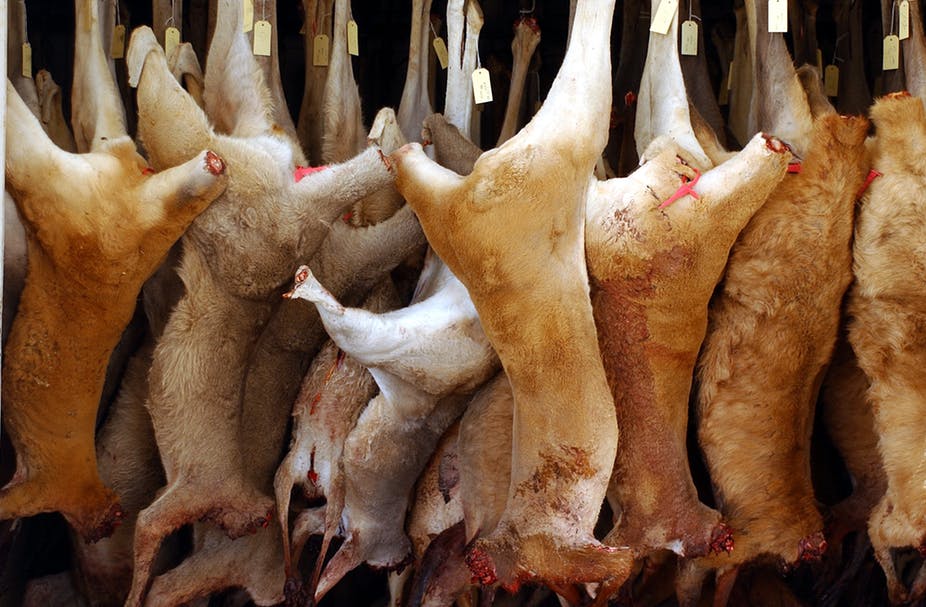In many parts of Australia, kangaroo numbers have declined to less than the quasi-extinction density of five kangaroos per square kilometre, the nominal value of kangaroo densities taken to indicate the effective loss of the species (Hacker et al, 2004).
Critical minimum densities are not clearly defined but populations below 2 kangaroos per square kilometre would generally be considered at risk of extinction (Hacker et al, 2004).
Kangaroo populations increase gradually. Actual wild population growth rates (PGR) are a maximum of ~8-10% per annum under good conditions (Arnold et al, 1991).
Most of Australia is experiencing severe drought, the worst drought on record. During drought, populations collapse with up to 100% joey mortality and up to 60% adult mortality with commensurate population declines (Shepherd N , 1981) (Robertson G 1986).
Kangaroos continue to be shot beyond reproductive capacity with shooting quotas of 15–20% and unknown levels of landowner and illegal shooting, even during drought when populations decline.
The commercial hunting of western grey kangaroos is unsustainable.
South Australia
In three regions of South Australia, estimates of western grey kangaroos are recorded as zero. The Eyre Peninsula, which includes two regions, was not surveyed in 2019, so current estimates are unknown.
In the north-east pastoral, the estimated number of western grey kangaroos was 91,828 in 2018. The following year, estimates crashed to 20,756. In terms of density per square kilometre, this is a decline from 2.91 to 0.66. Populations below 2 kangaroos per square kilometre would generally be considered at risk of extinction (Hacker et al, 2004). Yet, commercial harvesting of western grey kangaroos continues in this region at a quota of 2,100 or 10%.
Western Australia
The current Commercial Kangaroo Management Plan states:
It is important to note that the density estimates of kangaroos over much of Western Australia, particularly in rangelands areas, are significantly lower than in eastern Australia. Average densities in many areas of Western Australia are of the order of one kangaroo per square kilometre or lower, with average red kangaroo density estimates at the PMZ level ranging from less than 0.4 kangaroos per square kilometre to a high of around three kangaroos per square kilometre.
In the south-east region, western grey kangaroo numbers were 815,070 in 2018. The following year, estimates declined to 647,620. That’s a loss of 167,450 or 20%. Yet, commercial hunting continues at a rate of 98,450 or 15%.
New South Wales
The New South Wales Government is yet to approve the 2020 quotas. More than five million hectares have been destroyed during the 2019/20 bushfire season. Experts claim that approximately 500 million wildlife have been injured or killed as a result.
It’s impossible to know the estimates of western grey kangaroos in NSW because they are lumped together with eastern grey kangaroos. All we can tell is that, in terms of density, grey kangaroo numbers in NSW have crashed in all regions.
In Armidale, grey kangaroo density dropped from 28 to 10.37 from 2018 to 2019. For the same period, in Glen Innes, grey kangaroo density dropped from 34.1 to 10.77. Upper Hunter shows a drop from 32.5 to 7.53. Southeast NSW reveals a drop of 41.9 to 21.07. In the Central Tablelands North, density crashes from 74.5 to 14.7. The Central Tablelands South saw a decline of 49.4 to 23.2.
Victoria
Victoria is new to the commercial harvest of kangaroos.
The 2020 Management Plan states:
For quota purposes, Eastern and Western Grey kangaroos will be treated as “grey kangaroos”, primarily because of the expected difficulty in distinguishing between the two species under harvest conditions. The species both occur in the Mallee, Upper Wimmera and Lower Wimmera harvest zones; the remaining harvest zones only have Eastern Grey kangaroos.

